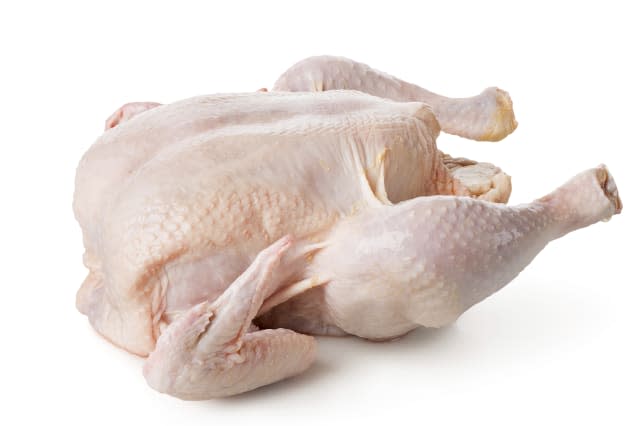75% of supermarket chickens carry deadly bug

The supermarkets are finally showing signs of improvement in dealing with the potentially fatal campylobacter food poisoning bug - but three-quarters of chickens are still infected.
The latest tests from the Food Standards Agency (FSA), covering July to September, show that campylobacter was present on 76% of chicken samples, down from 83% in the same months of last year.
Asda - repeatedly the worst offender - now has 76.5% of its chickens infected, compared with 80.5% in the previous quarter. Aldi, M&S, Morrisons, Sainsbury's and Tesco are all worse than before.
When it comes to the highest levels of infection - which is where the problem really starts - according to the FSA - Asda's still the second-worst, with an infection rate of 23.5%. At Morrisons, it's 25.7%.
Waitrose is the best, at 4.1%, closely followed by the Co-op at 4.7%.
The industry has agreed to a target of 7% infection at the highest level. It's still quite a way off, with high-level infection running at 15%, but that's still a big improvement from the 22% figure for the last quarter.
%VIRTUAL-ArticleSidebar-food-guide%
"It is good to see that some retailers are getting to grips with campylobacter. However, we want to see all of them pulling together to achieve real and lasting reductions," says Steve Wearne, director of policy at the FSA.
"I am also pleased that we are starting to see retailers and processors being open with consumers about what they are doing to tackle the problem and about the impact their interventions are having on the chickens they are selling."
Campylobacter is the most common cause of food poisoning in the UK, making an estimated 280,000 people ill every year, and killing around 100.
Worryingly, though, research published by the University of Manchester this week shows that many consumers are still unaware of the risk. Three-quarters of people interviewed didn't associate campylobacter with the chickens that they bought in the supermarket.
"Following the headlines - one year ago - about the amount of contaminated chicken on supermarket shelves, we surveyed 900 people and found that only 28% associated campylobacter with poultry and most still significantly underestimated the rate of contamination of chickens for sale in the UK," says Professor Dan Rigby, who led the research.
"These findings show there is still a huge amount of work to be done to reduce the problem of campylobacter infection; a problem which costs the UK around £900m annually."
To avoid infection, cooks are advised not to wash raw chicken, as this can spread germs through splashing. It should always be covered and stored at the bottom of the fridge, so that juices can't drip on to other food and contaminate it.
All utensils, chopping boards and surfaces used to prepare raw chicken should be thoroughly washed, along with hands. And the bird should be cooked thoroughly, until it is steaming hot with no pink meat and the juices run clear.










